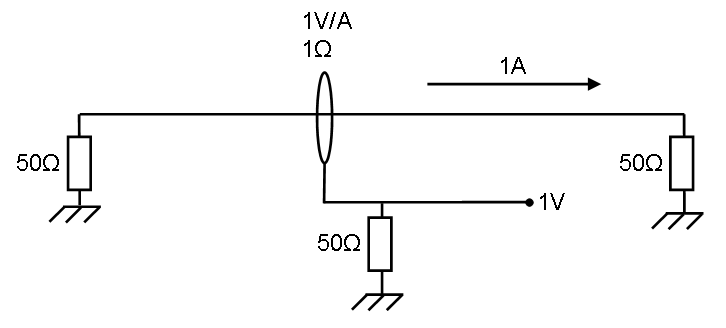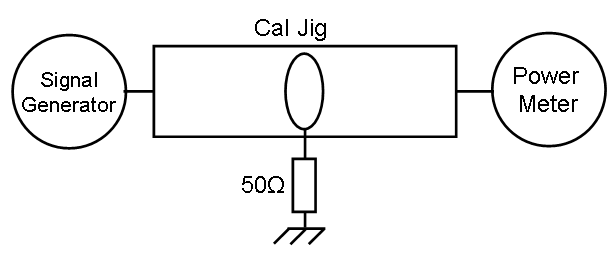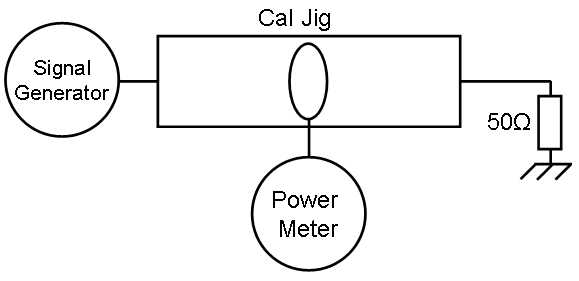Difference between revisions of "Current sensor transfer impedance determination method"
(→Verification) |
(→Verification) |
||
| Line 48: | Line 48: | ||
The difference is <math>-27,96 - (-33,98) = 6,02 dB</math> | The difference is <math>-27,96 - (-33,98) = 6,02 dB</math> | ||
| − | + | ==Conclusion== | |
Correction to a 1 ohm impedance is <math>20*^{10}log(R_{probe})</math> | Correction to a 1 ohm impedance is <math>20*^{10}log(R_{probe})</math> | ||
Revision as of 15:56, 23 January 2009
Contents
Theory
The left impedance is the signal generator which is generating enough power for 1 ampere.
This 1Amp. generates in the right impedance.
The current sensor has 1 ohm transfer impedance, this means 1 ampere generates 1 Volt on the measuring part below.
The power in the lower 50 ohm impedance is
So 1 ohm:
Reference measurement
Probe measurement
Calculation
and in dBm.
Example
On 10 MHz we have the following information:
- Calibration: 0 dBm.
- Measurement: -27,96 dBm.
So:
Verification
The left impedance is the signal generator which is generating enough power for 1 ampere.
This 1 Ampere generates in the right impedance.
The current sensor has 2 ohm transfer impedance, this means 1 ampere generates 2 Volt on the measuring part below.
The power in the lower 50 ohm impedance is
So 2 ohm:
The difference is
Conclusion
Correction to a 1 ohm impedance is














